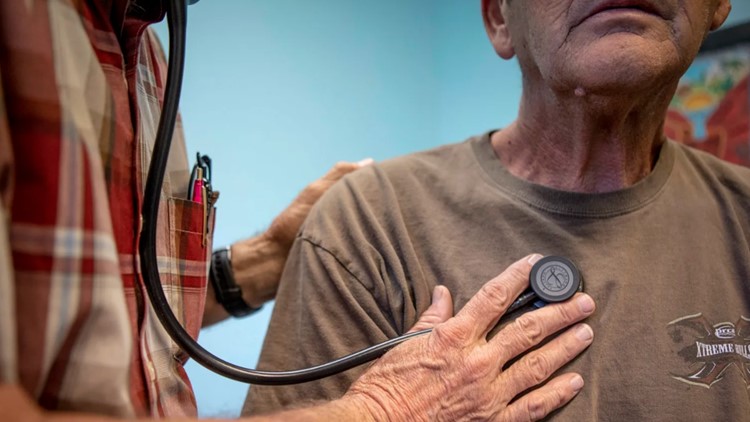CALIFORNIA, USA — After years of multimillion-dollar battles over medical malpractice awards, legislators and advocates on both sides have reached a deal, potentially averting a ballot measure that would have put the decision to voters.
The agreement, announced today, would replace the ballot measure with legislation raising the cap for a patient’s “non-economic damages,” or pain and suffering, although in a more incremental approach than the initiative would have.
Under the legislative deal, starting Jan. 1, 2023, cases not involving a patient death will have a new limit of $350,000, with an increase over the next 10 years to $750,000 and a 2% annual adjustment for inflation after that. Meanwhile, cases involving a death will have an increased limit of $500,000 that will grow over the next 10 years to $1 million, with a 2% annual increase thereafter.
Under current law, a $250,000 cap only applies to non-economic damages and Californians who suffer from medical malpractice can recover as much as they need for medical bills and loss of income.
The California Medical Association today sent a letter to its members detailing the deal.
“The two sides of the ballot measure campaign have committed to putting patients first, to prioritizing the stability of affordable access to health care, and to set aside differences to do what’s right for all Californians,” says the letter signed by Dr. Robert E. Wailes, president of the California Medical Association.
In the letter, Wailes said his organization is working with Gov. Gavin Newsom’s administration and the Legislature to turn this new arrangement into law. “Under the agreement, the initiative will be withdrawn from the ballot and this watershed agreement will preclude another costly fight.”
The ballot measure, known as the “Fairness for Injured Patients Act,” was brought by families of injured patients and is backed by the advocacy group Consumer Watchdog and trial lawyers. It sought to increase the compensation cap for non-economic damages to about $1.2 million. The current cap is set at $250,000 and has been in effect since 1975.
The ballot measure would have allowed a judge to exceed that cap if a patient died or suffered a “catastrophic injury,” meaning an injury that left them permanently disabled or disfigured.
Nick Rowley, a trial attorney who helped author the measure and a key funder of it, said taking the legislative route through Assembly Bill 35 secures a cap increase for patients and their families. The legislation would allow for multiple caps — one for a medical institution and another for a provider, for example. That means that in a case not involving a death, a patient could potentially hold multiple parties liable and receive more than $350,000, Rowley said.
“That’s a big change and that number is going to go up,” he said.
Rowley said he is ready to pull the ballot measure as long as the bill is signed as is. Newsom has until the end of June to sign.
The Medical Injury Compensation Reform Act, or MICRA, which first set a cap on malpractice payouts, was signed by Gov. Jerry Brown in 1975 during a special legislative session convened after the California Medical Association raised the alarm on skyrocketing malpractice premiums. At the time, Los Angeles doctors were told by insurers that their costs would increase five fold.
“This has been an issue since before I came to the Legislature,” said state Sen. Tom Umberg, one of the legislators carrying the bill. “I think MICRA needed adjustments some time ago…[but] it’s been difficult to achieve a compromise.”
In opposition to the ballot measure, a coalition of health providers argued that it would essentially have eliminated the cap and significantly increased the number of lawsuits filed in the state. They argued it would result in less resources for patient care and ultimately drive up the cost of health care.
Medical malpractice costs account for approximately 1% of total health care spending in the state, according to a Legislative Analyst’s Office analysis of an early version of the ballot measure. Raising or removing the cap is likely to increase overall health care spending though an exact dollar amount is hard to determine, the analysis states.
What this means for patients and their families
Charles Johnson, chairperson of the campaign in support of the ballot measure, lost his wife, Kira Johnson, in 2016 during a scheduled C-section at Cedars Sinai Medical Center. He sued the hospital and has a pending case.
The new limits, if passed, wouldn’t apply to his case, but he said he took on this role so that other families could seek legal representation and accountability.
“Lawyers told me time and time again that they couldn’t take my case because of these caps,” Johnson said. The $250,000 barely covers legal fees and families are often discouraged from going to court because they can’t afford it, he said.
“Medical malpractice is expensive to try,” he said. “You’re going to spend upwards of $100,000 just to go to trial.” Most families only go to court if they have the resources or if they can get an attorney to take their case pro bono, he said.
If it becomes law, this agreement would grant families the opportunity for justice, he said. “The financial part is just one piece of this…there is no number that will bring my wife back,” he said. “For these families, it’s about justice.”
Johnson said striking a deal with the opposition and enacting changes through legislation is the best solution for families.
Carmen Balber, executive director of Consumer Watchdog, a supporter of the measure, said the bill will fundamentally change patients’ access to justice when they are harmed by medical negligence.
“The reason it was on the ballot is because families are locked out of the courtroom; they have no access to accountability because of how low this cap is,” she said.
A long time coming
In 2014, a similar ballot measure to raise the caps on monetary awards was soundly defeated by a two-thirds vote.
Fighting these measures at the ballot box is an expensive endeavor, particularly when they’re brought before voters time and time again. The proposed compromise would avoid another costly fight. Already, Rowley’s measure has generated $23.2 million in contributions, with a bulk of the funds — $21.9 million — raised by opposition groups.
In recent years, special interest groups have successfully pressured lawmakers into enacting reforms by threatening high-priced ballot battles. Last year, three measures — including a soda tax ban, an internet privacy expansion, and a lead paint liability limit — were pulled from the ballot after similar deals were reached.
The 2014 medical malpractice ballot measure generated more than $70 million in contributions, with opposition industry groups — including insurers and physicians groups — raising the bulk of the funds, while attorneys funded most of the support.
Attempts to reform the original malpractice law in the Legislature have also repeatedly failed, and constitutional challenges to the law have been rejected by the state appellate and supreme courts. Earlier this year, the state Supreme Court ruled that the liability cap also applies to physicians assistants practicing under the supervision of a doctor.



